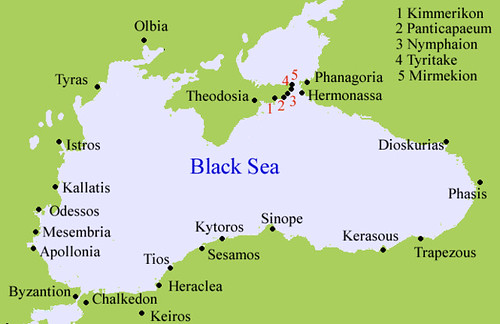 |
| Latinkon unit as it is designed for the game Medieval 2 total war |
The recruitment of soldiers from the West was an institution from the early period of the Eastern Roman state, as the Byzantines had inherited the foiderati system from the Romans. Justinian formed units of cavalry from Vandal and Goth captives and Heraclius had the regiments of Optimates and Boukellarioi cataphracts who were probably Ostrogoths from Italy. It is rather likely that when Byzantine relations with Charlemagne became strained, many Lombard exiles found their way in the Byzantine army and perhaps even in the Royal Company (Hetairia Vassilike) that constituted the imperial bodyguard at the time. Up to this period the Westerners did not constitute an elite formation and perhaps were dispersed among the “thematic” troops to avoid unpleasant situations.
The mass recruitment of Westerners begins in the end of 9th century. On Christmas of 876 A D the Byzantine governor of Bari occupied the city after invitation of the residents who were afraid that the Lombard dukes could not protect them from the Arabs. The next year Byzantine diplomats formed an alliance of duchies and communities against the Islamic danger. The bulk of the cavalry was provided mainly by the Lombard dukes who fought as heavily armored horsemen. In 885-6 A.D. the Byzantines occupied Calabria and in 891 A.D. they created a new administrative province based on Apulia and named it “Loggobardia”. The Lombard dukes were divided and could not react, but duke Meles and others after they hired Norman mercenaries revolted in 1009 A.D. Emperor Vasileios II dispatched the capable general Boioannis, who with a combination of briberies and military pressure restored the imperial authority. Then he used the Norman mercenaries against the Arabs of Sicily.
As long as there was a capable commander in the office of Katepano of Italy everything was under control. But from the death of Vasileios II in 1025 and afterwards the situation escaped from the Byzantine control. The Norman mercenaries seized the Lombard fortresses and then looted the Byzantine provinces. The situation was reversed however by the capable general George Maniakes. After he ensured the support of the Norman groups of Hauteville and Drengot he restored the Byzantine sovereignty. Then he campaigned in Sicily against the Arabs and reconquered the whole of the island. The most reliable elements of his army were the Varangians and the Italiotic horsemen: Normans and Lombards. Maniakes however humiliated the leader of the Lombard knights: Arduin and made him dessert. Afterwards Maniakes was recalled and Hauteville occupied Sicily for their own benefit. Maniakes supported by the Western knights proclaimed himself emperor but he was killed in the battle of Ostrovo outside Thessalonica
 |
angevin.org
Typical helmet of a foreign mercenary (Latinikon) |
Exploiting the Byzantines’ need for willing and trained soldiers the Normans entered the Byzantine territory in great numbers. One of the first was Hervé in 1050. The Normans were placed as guards in the Eastern borders and their bases were Malatya and Edessa. Seeing the weakness of the Eastern Roman state they wanted to profit at its expence. The notorius Roussel de Bailleul attempted to create an independent principality in Anatolia but he was arrested by the Alexius Komnenos. From 1073 until 1074,.8000 from the 20000 men of general Philaretos Vrahamios who fought against the Seljuks were “Afrangioi” (Franks) under general Raimbaud
In Constantinople we learn from the “Alexiad” that German knights were part of the city garrison in 1081. The diplomatic manoeuvres of the Komnenoi ensured many times the services of heavy German cavalry for the Empire. During the reign of the Westernophile Manouel Komnenos the foreign knights litteraly flooded Byzantium. As Manouel fought against opponents who applied the tactic of massed sweeping charges of heavily armored knights, he intented to face then in the same way. Also after Mantzikert it did not exist indigenous cavalry that could apply this tactic, so the solution was the recruitment of Western knights. All the next period the Eastern Roman State relied exclusively on Western mercenaries in order to form units of heavy cavalry. The general decay, the economic decline and the civil wars in which the Westerners were also involved for their own profit, destroyed the state little by little. The end of foreign mercenaries and the Empire came in 1453 with the capture of Constantinople by the Ottomans.
 |
| Norman knights served as mercenaries in the Byzantine army |
The Western Legion.
As mentioned previously the first recruits were Lombards and were initially icorporated in the cavalry of the Italian provinces of Byzantium. From that time the western units were viewed with suspicion, perhaps because of the frequent revolts of the local Lombard dukes.
The sceptres however were soon taken by the Normans. The Normans were descendants of Scandinavian invaders of France. The Frankish kings granted them the northern provinces of their kingdom in return, of submission and offer of military service.The former invaders accepted the French language and the Western feudal habits and from heavily armed infantry evolved as knights. According to the habit of the era the firstborn son inherited his father’s estate and younger ones, if they did not ensure marriage with a rich heiress, were left to find their fortune via their arms. At that period, the christian kingdoms were hardpressed by Islam and the determined mounted warriors were precious. The temptation therefore to go down to the fabulous South in order to make their fortune was great.
The chronicler Geoffrey Malaterra wrote about the Normans that: “..were distinguished particularly in mischief, scorn their heritage with the hope of acquiring a bigger fortune, they are eager for profit and honor, and prone in all kinds of hypocrisy, balancing between generosity and greed and combining strangely two ostensibly opposite attributes. Their leaders are particularly generous thanks to their desire for fame. It is also a race skilful in flattery, absorbed in the study of eloquence, so that even the boys are skilful speakers, a race untamed except and if it is held by the yoke of justice. They endure the fatigue, hunger and cold, whenever fate throws it upon them. Are absorbed with the hunting and falconry, and they particularly like horses and all the trappings of war…”
As it could be expected these men respected only the dynamic leaders, but from the middle of the 11th century, Byzantium did not have enough of them. The result was that the knights revolted in the first opportunity and attempted to found independent states. Despite the continuous problems, their courage and their fighting spirit caused the Byzantines to hire them as mercenaries until 1200. The unit however was reliable and effective only if it was commanded by leaders of the caliber of Maniakes or Komnenos.
 |
| Αllamanoi(Αλλαμάνοι): German mercenaries in the Byzantine army. |
The first Germans were probably recruited by Ioannis Tzimiskis. In 1081 they are reported by Anna Komnena. The unit however expanded after the marriage of Manouel Komnenos with Bertha Von Sultzbach. With his second marriage with Mary of Antioch Manouel hired himself many Franks of the Levant. The “Latins” became unpopular with the population as the army was used as a tax collecting mechanism. Tax collection from the foreigners reached the limits of pillage and the religious feeling of the population was insulted with the confiscation of ecclesiastical resources from “heretic foreigners”. The Byzantines considered the knights as barbarians. For their part the Westerners saw the decay and weakness of the empire and the efforts to restrain them became even more difficult as they considered the Byzantines weak and cowardly. Also the dogmatic differences in an era where the religion played an important role worsened the situation.
.jpg) |
| Hungarian knights |
Anti-Latin riots and the slaughters of 1182 led to the dissolution of the unit. In 1204 however, Theodoros Laskaris re-establishes the formation with 800 Italian soldiers that distinguished themselves in the battles near in the river Meander. Around 1250 Hungarian knights were added. They will contribute later in the victory of Pelagonia. Many of their Frankish captives of the battle were incorporated in the unit. From 1263 up to 1270 the Lombard adventurer Likario whom the Byzantine chroniclers call Ikario re-occupied most of the Latin possessions in the Aegean on behalf of the Byzantine emperor.
After the devastating experience with the Catalan Company the number of Westerners in the army decreased but the need for heavy cavalry remained. Most Westerners were henceforth crossbowmen or operators of the primitive Medieval firearms. The financial position of the state was bad and the army shrunk following the general decomposition and decay. The king of France Charles VI sent to Manouel Palaiologos 1200 men commanded by Marshall Boucicaut. Boucicaut reached Constaninopolis and carried out raids against Soultan Vayazit but with meagre results. In 1445 300 knights were sent to the Despot of Mystras by the Duke of Burgundy and in1453 the end of the unit was written on the Theodosian Walls by the men of Giustiniani that fought bravely up to the incapasitation of their leader
Generally the “ Latinikon” regiment constituted a multinational legion in which served warriors from Western Europe. The unit performed best under dynamic leaders and also seriously damaged the Byzantine state under incompetent or weak administration.
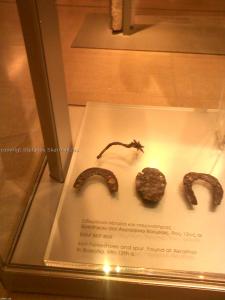
Byzantine horse shoes and stirrup. Byzantine Museum Athens. S. Skarmintzos archive.
In Byzantine Service…
Contrary to the Varangian Guards the “Latin” knights they did not have uniformity in their appearance. Initially they wore chain mail with short sleves and conical helmets of “Spangenhelm” type consisting of four iron plates that were held together with the help of one metal ring. The “slavonic” helmets or the helmets of the steppe warriors with a sharp conical top would be unusual except if they came from loot. The helmets did not have internal lining and were adapted on specially shaped wollen or leather arming caps, while they had holes for leather straps that were tied under the chin. First the Normans began to use hoods made from iron rings as additional protection. A white turban was perhaps wrapped round helmet as protection from the heat as used by their Muslim opponents.
The chain mail amor would be worn above a specifically shaped woolen or leather gambeson (Byzantine “kambadion”) that would help in the absorption of the vibrations from the violent blows during the clashes. Modern research has revealed that this armor provided excellent protection from arrows despite what was written up to now. In “Alexiad” it is reported that the only effective defence against the knights is the shooting of their usually unarmored horses.
The knights carried a conical shield with a metal boss in the centre. Many times the shield had a length from the neck to the knee and was straped on the shoulder with the aid of a baldric. Those who could afford it, would have strengthened the perimeter of their shields with metal laminas. Each knight brought on his shield his own personal or family emblem. Information of unit emblems, if any, have not survived.
The knights used lances during the charge but probablaly they carried javelins at the raids. The axe was not a common weapon. A club with metal spikes, the “mantzoukio” of the Byzantines, was popular because of its low cost and its attribute to break the bones of the opponent under the armour. The long swords were the main weapon of the horsemen for close combat and constituted the symbol of the knight’s honor. A great variety of knives and daggers would be useful as secondary weapons and tools.
Their clothing would mainly be woolen tunics and naturally they would be impressed by the linen, cotton and silken tunics of the Byzantines. The long boots and red cloacks are reported by the chroniclers but the red investors would be found rather between the leaders. The rest of the men would wear simple gray cloacks or furs of animals that would be used also as mattresses on campaign.
During the 12th century however the defensive equipment was improved. More solid conical helmets with nasal guards, made from a single piece of metal, appeared. The protection of the men would be upgraded with the application of metal plates on the chain mail. Greaves and vambraces, constituted from solid pieces of metal, straped with leather cords were used in order to protect the hands and thelegs. The faces were covered with iron masks adapted on the helmet and little by little, cylindric helmets with impressive decoration appeared. The knights of 13th and 14th centuries possibly had a slightly different appearance following the habits of their time. In their equipment were now included helmets with lifting visors and war hammers. The horses were heavily protected and armors would be consisting of onepiece metal plates. This development emanated from their contact with muslim armies horsearchers who took aim na shot at the unprotected horses.
The knights' retinues were usually less armored and carried lighter equipment. They wore helmet and their armour composed of linen or cotton layers – the”kambadio” of the Byzantines. Many of them were crossbowmen. The retinues carried out light cavalry missions or harrashed the opponent with arrow shots preparing thus the assault of the heavily armored horsemen.
The knights' tactic was the rapid and mass impetuous charge against the enemy that had been first “softened up” from the infantry missile weapons. They should however be supported by good infantry or light horsemen because they were in danger from their impetuosity to be drawn into ambushes. In the passage of time this became difficult because the Byzantine army declined and this resulted a lot of devastating defeats.
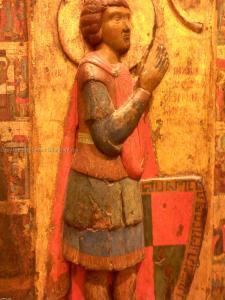
14th cent depiction of St George as a knight. Byzantine Museum Athens. S. Skarmintzos archive
The LATINIKON in battle…
1009 A D Duke Meles revolted attempting to make the city of Barri independent. The army sent against him included: Dani, Rossi and Gualani.(Danes, Russians, and Welsh;). Barri was taken but Meles revolted again in 1011 aided by the Normans. In 1018 Vasilios Boionanes crushed the Normans at the battle of Ofante.
1018 A D General Vasileios Boioannes with an army that included Norman knights went to Sicily and took Messsina from the Arabs
1038-1041 A D A campaign in Sicily and Southern Italy under general George Maniakes included Western mercenaries. The Norman commander Gulliome de Hauteville killed the emir of Syracuse earning the nickname «Iron hand».
1041 A D The Norman general Hervé revolted against Michael IV and led his 300 Normans soldiers in Eastern Asia Minor in order t make it an independent state. –After fighting the Seltzuks and captured by the emir Abu Nashr was sent to the emperor in chains but he was pardoned
1060 A D The Norman general Robert Crispin led the Normans of Edessa against the Seltzuks.
1067 A D Roussel de Bailleul enters Byzantine service. Chroniclers call him Ruselios or Urselios.
1071 A D The Normans under de Bailleul desert emperor Romanos Diogenes at Mantzikert.
1073 A D Roussel de Bailleul attempts to create a principality in Asia Minor with Ancara as its capital
1074 A D The Norman commander Raimbaud who served under general Brachamius is killed in battle against Armenian rebel Tornicius. Ο Roussel de Bailleul is surrendered by the Amaseans to Alexius Komnenos
1081 A D Alexius Komnenos bribes the German «Latinikoi” to enter Constantinopolis without a fight.
1081 A D The “Latinikon” under the command of Constantine Umvertopoylos takes part in the dissastrous battle of Durazzo (Dyrrachium)
1089 A D The “Latinikon” under the command of Constantine Umvertopoylos beats the Petseneges outside Philipopolis
1091 A D 500 knights sent by the duke of Burgundy take part in the battle of Levunium against the Petseneges
1122 A D Battle of Verroe, against the Petseneges. The Normans and Flemings crush Petseneg heavy cavalry.
1143-1180 A D Great numbers of Germans and French knights enter the Byzantine service because of Manuel Komnenos pro western policy.
1173 A D Western mercenaries defend Ancona from the Normans
1176 A D The “Latinikon” regiment is wiped out at Myriocephalon.
1180 A D The German and Italian “Latinikon” regiments fight against the Hungarians at the battle of Shemlin.
1182 A D The “Latinikon”regiment αποδεκατίζεται κατά την διάρκεια των αντι-δυτικών ταραχών που ξεσπούν στην πόλη.
1211 A D Theodore Laskaris' Italian soldiers distinguish themselves in a battle outside of Pissidian Antioch
1259 A D Hungarian knights in Byzantine Service fight against the Franks in Pelagonia
1398-9 A D. The knights of Marshall Boucicaut defend Constantinople from the Turks
1453 A. D. The soldiers of “protostator” Giustiniani defend Constantinople from the Turks until the fatal wounding of their commander.
Sources:
The University of Cambridge “History of the Byzantine Empire”(in Greek )
Melissa publications 1966
Europa Militaria The Vikings recreated in color photographs
Iohannes Kinnamos Epitome Rerum ab Ioanne et Alexio Comnenis, Augustus Meinke ed., (Bonn 1836)
Osprey Military publishing Co: Byzantine Armies 886-1118
Gravett, Christopher, and Nicolle, David. The Normans: Warrior Knights and their Castles. Osprey Publishing: Oxford, 2006
Norwich, John Julius. The Normans in the South 1016-1130. Longmans: London, 1967.
Gwatkin, H.M., Whitney, J.P. (ed) et al. The Cambridge Medieval History: Volume III. Cambridge University Press, 1926.
A History of the Byzantine Empire by Al. Vasilief Translated from the Russian by S. Ragozin, Madison 1928

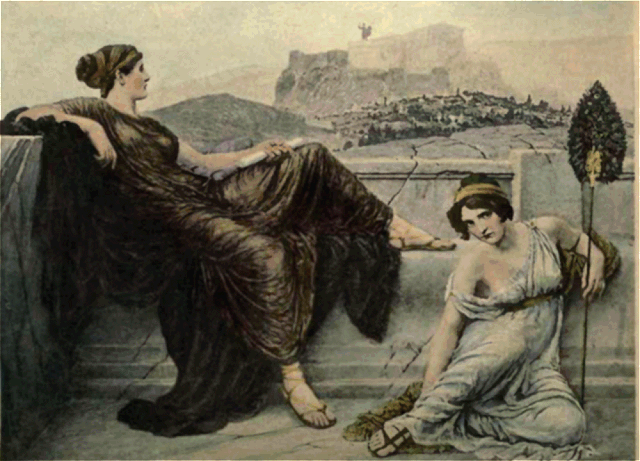

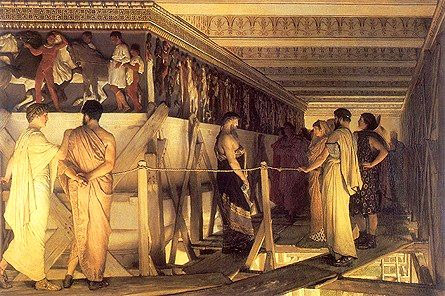






.jpg)




